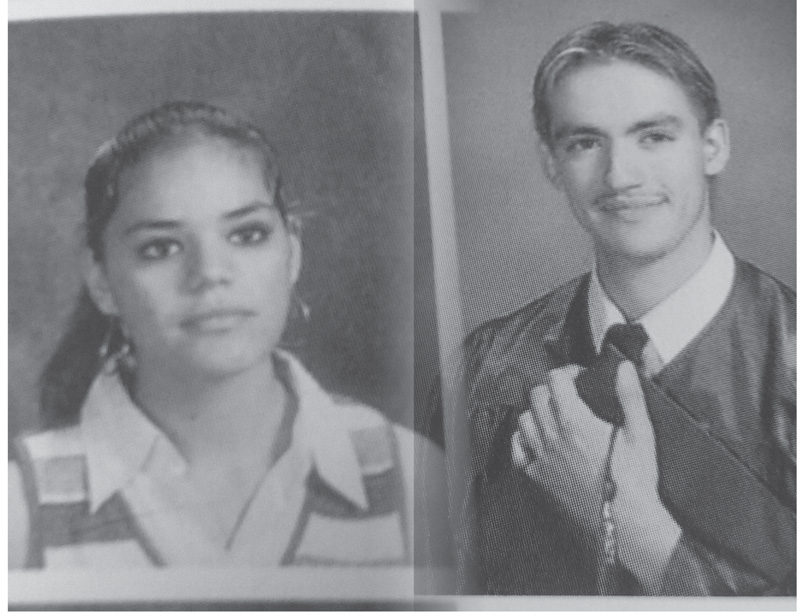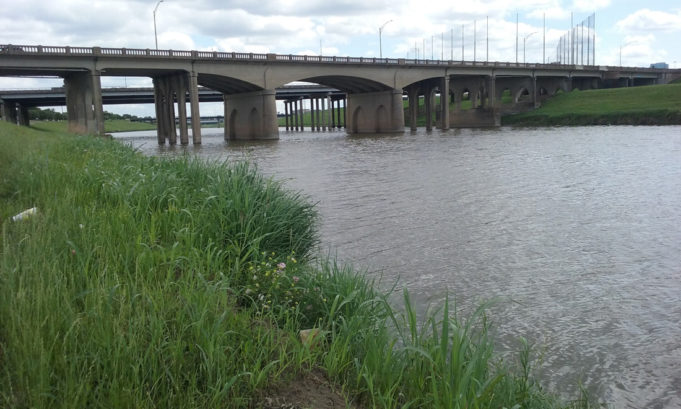The finals were done and not a moment too soon. It was 2004, and I had made it to yet another last day of school. On the porch of my portable at Amon Carter-Riverside High School, I was one exhausted teacher but deeply happy to have notched one more year in my belt.

Photo by Ken Wheatcroft-Pardue.
As always, a couple of stragglers came by to say their goodbyes. I wished them all a happy and safe summer. Then I caught sight of two of my former-ESL students, walking hand in hand. They were the cutest couple you’d ever want to see, Mirna Dominguez and Fernando Vitolas, both bright and engaging young people.
As they passed, I gave Fernando a deep bow and shouted out, “Congratulations, senior!” He smiled and nodded a slight acknowledgment. I didn’t feel slighted, though. They were both in the moment — glad school was finally over, looking forward to the summer, and just happy to be alive.
That was the year we had the big June storm right after school let out. In my neighborhood, it knocked out electricity. It wasn’t so bad. The rain and clouds cooled the air so that it wasn’t as sweltering here as usual, and we were fine living without AC for a little while. Just out of the hotplate of high school teaching, somewhat akin to herding feral cats, living without electricity totally relaxed me so much so that after our power returned, I went by my portable to clean up my files, a yeoman’s task I would have normally put off until closer to August. Afterward, as I went out to my car, I felt especially virtuous for being such a conscientious teacher. That feeling of earned virtue didn’t last.
When I crossed the street, one of my old students, a junior in his hopped-up car, stopped me. He rolled down his window and asked me a question I never wanted to hear, “Have you heard about Fernando and Mirna?”
I shook my head.
With a face etched with pain, he told me that during the storm, Fernando’s car was washed off a bridge that went over a creek that ran into the Trinity. Two of his best friends were now dead. I could tell he was badly shaken by this news. All I could do was listen.
Inside, I was just stunned. That sight of Fernando and Mirna on the last day of school so full of life flashed through my mind. I asked myself, How could it be they were gone? It’s one of the saddest things teachers deal with — the death of a student. It occurred way too often in my career. I know we’re not family or best friends, but we see our students 180-some odd days in the year. To see such fine young people I’ve worked with die before their time shook me to the core every time it happened.
This accident also points to how many of us underestimate the primal power of water. Living around the Trinity River and the creeks that run into it, we all become complacent, forget about those times their swirling muddy eddies, filled with branches and fast-food flotsam, rise, surge, and kill. We become so used to it we see it as something that we have tamed. Walking or cycling beside it, we smell it, its saltiness, its sometimes effluent stink. As we go about our business, we drive over bridges and shake our heads at how low the Trinity has gotten, how sometimes it meanders like a creek, barely trickling through the city. And at times, our creeks aren’t even puddles. We forget we live at the confluence of the Clear and West forks — that, yes, practically dries up sometimes — but at other times, it and the creeks running into it are a rushing torrent that have the proven ability to kill.
Since there are so many local governments along the river, the number of people who annually drown in the Trinity is hard to pin down, but if you google “Drownings in the Trinity River,” you’re sure to receive tons of results. And no matter what the exact number is, the answer is too many drown in the Trinity.
Spring has returned to North Texas. Yellow oak pollen covers our cars, flowers bloom, trees are reborn, and, even after COVID-19 and the snowpocalypse or because of them, a spring returns to our steps, but it is also that time of year when storms pop up quickly and low water crossings become death traps. Despite our very human hubris in thinking we control nature, even in 2021, we don’t completely.












